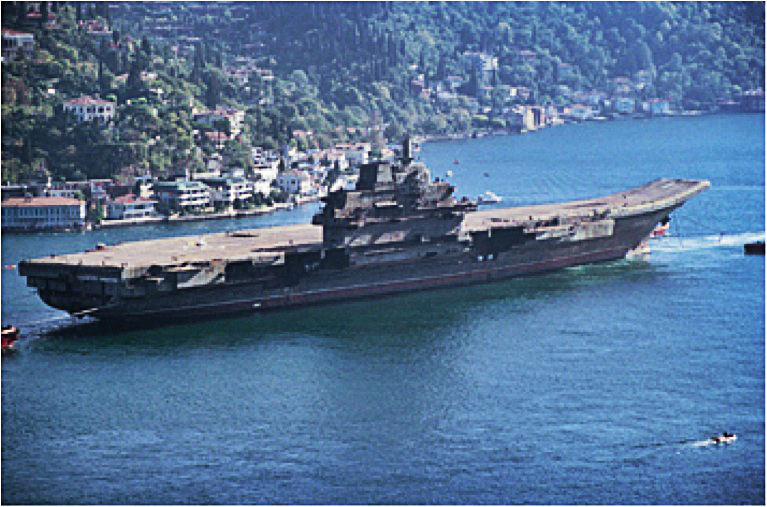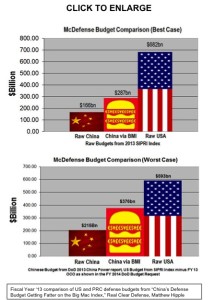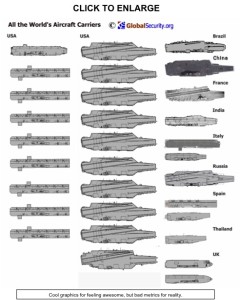Unseen Gains of the PLA: Objects in Mirror Are Closer than They Appear

Analysis is easy when you assume your opponent is just a lesser version of yourself; a likely reason we often defer to simple defense budget comparisons when talking about China. When we focus solely on the dollar-for-dollar budget of the People’s Liberation Army, we’d find it disturbingly close to the U.S. budget and certainly beyond those budgets of U.S. allies. The reality, however, is more complex – but it is even less optimistic.
Though “China is not the United States,” is a simple statement, it digs at many comparative biases we retain when comparing our position to the oncoming PLA freight train. Outside the typical discussion of expanding budgets and the asymmetric advantage through anti-access/area denial (A2/AD), comparative advantages can also be found in China’s superior purchasing power, superior force distribution, and a first-mover advantage. These are the silent advantages missing when we focus narrowly on budgets or tactics.
1. The Big Mac Defense Index: Purchasing Power Parity
The trends of pure budget estimates, while themselves disturbing, only scratch the surface. Instead of comparing dollar-for-dollar defense budgets, we should be comparing value-for-dollar based on price-baskets, or the purchasing power parity (PPP). A quick reality check would intuit that Chinese personnel costs will be lower – the quality of quantity can be fielded at far lower prices. However, from bombs to bacon, the PLA has a completely different price basket: different supplies, suppliers, middlemen, safety and administration costs, etc.
 A more telling comparison would be using a comparative price-basket: in this case, an admittedly rough analysis using The Economist’s ubiquitous Big Mac Index (BMI) to measure the “value” of each dollar spent. Looking at a burgers-to-burgers PPP analysis at Real Clear Defense, the picture is rather dire. In the best case scenario dollar-for-dollar comparison, China’s defense budget is 24% of that of the U.S. For a weighted purchasing power estimate, we spend the entire Chinese defense budget on Chinese-priced Big Macs, then convert those burgers by their US prices. The best case BMI weighted assessment reveals a budget of 42% of that of the U.S. In a worst-case dollar-to-dollar estimate, China’s budget is 36% of the American defense budget. A weighted analysis of this scenario reveals a budget of as much as 63% of that of the U.S.
A more telling comparison would be using a comparative price-basket: in this case, an admittedly rough analysis using The Economist’s ubiquitous Big Mac Index (BMI) to measure the “value” of each dollar spent. Looking at a burgers-to-burgers PPP analysis at Real Clear Defense, the picture is rather dire. In the best case scenario dollar-for-dollar comparison, China’s defense budget is 24% of that of the U.S. For a weighted purchasing power estimate, we spend the entire Chinese defense budget on Chinese-priced Big Macs, then convert those burgers by their US prices. The best case BMI weighted assessment reveals a budget of 42% of that of the U.S. In a worst-case dollar-to-dollar estimate, China’s budget is 36% of the American defense budget. A weighted analysis of this scenario reveals a budget of as much as 63% of that of the U.S.
The US has major challenges in its modernization efforts and personnel costs, whereas China steals its way past these challenges, saving billions in R&D costs. The potential value pulled from these PPP-adjusted numbers is an unsettling reality check: we’re watching China catch up to us in the rear-view mirror, but they’re much closer than they look.
2. Superior Force Positioning: Port Arthur and Peacetime Maintenance
The United States may have the mightiest fleet on earth, but all elements of that fleet are never in the same place at the same. Numerical considerations count for less against smaller or lower quality opponents if they can engage and destroy regional squadrons. At the West 2014 conference hosted by AFCEA and USNI, Dr. James Holmes made the point that a small Chinese fleet could beat the United States; beyond the simplicity of the home-team advantage, this goes to lessons of force positioning learned during the Russo-Japanese war.
 Though the laughably horrendous readiness condition of the Russian Fleet was a key factor in this disaster, the Russo-Japanese war was deadly instruction about the reality of statistics: national fleet size does not matter if ships are not on-scene. In the parlance of today’s Navy public affairs campaign, “#presencematters.” This has dual meaning to us because it underscores the importance of being on-scene while also reminding us that the Navy is already spread around the world tending to legitimate soft and hard power concerns.
Though the laughably horrendous readiness condition of the Russian Fleet was a key factor in this disaster, the Russo-Japanese war was deadly instruction about the reality of statistics: national fleet size does not matter if ships are not on-scene. In the parlance of today’s Navy public affairs campaign, “#presencematters.” This has dual meaning to us because it underscores the importance of being on-scene while also reminding us that the Navy is already spread around the world tending to legitimate soft and hard power concerns.
We also often forget that the U.S. debates over 1.0 or 2.0 “Carrier Presence” are a reflection of the fact that these ships are not always so readily available. Not only are they forward deployed around the world, but those that aren’t deployed have peacetime regular maintenance cycles, training cycles, equipment modernization, dry-dock periods, and a whole slew of other commitments that keep them from plying the seas. Thankfully, the same maintenance and training that ties our fleet up in port is also the reason we are the best at what we do. Still, that capability only matters if it is positioned to pose a threat.
The lessons of Port Arthur and the later Baltic Squadron are instructive: fleet-to-fleet comparisons are a bad metric, especially for a globally-distributed force against a local foe. In other words, don’t count so heavily on ships that are not there. America’s navy matters less than America’s navy within a few hours or days striking distance of conflict.
3. First Mover Advantage: Action Beats Reaction
Public dialogue on a China conflict tends to analyze our capabilities in a stand-up fight. Step 1: We’re in the Pacific, Step 3: There’s a war. We skip Step 2, how the war starts. That debate often has us looking in the mirror at some sort of parity: any conflict will happen when the U.S. Navy has sufficient strategic warning, and BOTH parties have an opportunity to position their forces and the U.S. has capability stationed in theatre to make such a stand-up comparison.
To continue the mirror analogy, China has the advantage lurking in the blind-spots: action beating re-action, potentially planning for what Capt. James Fannell called a “short sharp war” at the West 2014 conference. As the “defense player”, the US and her allies will most likely be in reactive mode. Barring an accidental escalation of force over the ADIZ or disputed position of shot-down aircraft, any Sino-_____ War, short or otherwise, will be started by China and with the PLA pulling the trigger at a time and place of its choosing. In the case of either error or edict, the U.S. will be on the back foot.
Within China’s potential “salami slicing” strategy, their military may already be neck-and-neck with the United States for their functional needs. While the U.S. seeks strategies and operational concepts to defeat China in a potential skirmish or war, China’s military is merely entrenching small grab-and-gains. Quick, small movements that are hard to decisively counter or roll-back make a larger, potentially more cautious power uneasy. In this case, the Chinese military is already the right size and regularly taking the first-mover advantage.
We take liberties in analyzing China wherein we assume too broadly that they are like us, or that we are in the same position as them. This article is merely a way to broaden our perspective on China’s potential advantages, not a warning siren of China’s dominance: a re-assessment of the closing gap, not the actual over-taking. There are cogent reasons that war with China is unlikely, from economics to the PLA’s readiness. The United States is still the better trained, better equipped, and better maintained force by orders of magnitude.
“Being the best” is not an entrenched position; we’re in a race and watching the PLA catch up in the rear-view mirror: objects in mirror may be closer than they appear. As that gap closes between the Chinese and U.S. militaries, we open that margin of error wherein China may decide for “slicing of sabres” over “salami slicing.”
Matthew Hipple is a U.S. Navy surface warfare officer. A graduate of Georgetown University’s School of Foreign Service, he is Director of the NEXTWAR blog for the Center for International Maritime Security. While his opinions may not reflect those of the United States Navy, Department of Defense, or US Government, he wishes they did. Follow him on twitter: @AmericaHipple.
Photo credit: Robert Huffstutter (adapted by War on the Rocks)

